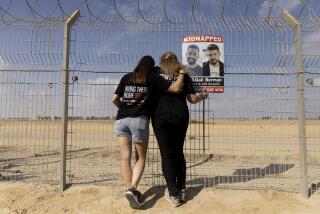Surprise! The Soviets Nearly Won Afghan War
Twenty-five years ago, on Christmas Eve, Soviet troops marched into Afghanistan with the aim of restoring order in a few months. Nine years later they withdrew amid continued violence. In their wake, civil war erupted and the Taliban rose to power, providing a haven to Al Qaeda.
Critics of the U.S. military effort in Iraq often cite the Soviet experience in Afghanistan as evidence that using foreign troops to put down an insurgency is bound to fail. But that “lesson” is misleading because it depends on a depiction of the Soviet-Afghan war that is downright inaccurate.
When Soviet forces invaded Afghanistan, they initially failed to protect their logistical and communications lines. But Soviet commanders quickly corrected these mistakes and brought in better troops, including helicopter pilots trained for mountain warfare. From mid-1980 on, the Afghan guerrillas never seized any major Soviet facilities or prevented major troop deployments and movements.
When Soviet generals shifted, in mid-1983, to a counterinsurgency strategy of scorched-earth tactics and the use of heavily armed special operations forces, their progress against the guerrillas accelerated. Over the next few years, the Soviets increased their control of Afghanistan, inflicting many casualties -- guerrilla and civilian. Had it not been for the immense support -- weapons, training, materials -- provided to the Afghan guerrillas by the United States, Saudi Arabia, China and Pakistan, Soviet troops would have achieved outright victory.
Even with all the outside military assistance, Afghan guerrillas were often helpless when facing the Soviet military machine. Raids conducted by Soviet airborne and helicopter forces were especially effective. In late 1985 and 1986, guerrilla units sustained heavy losses in the Kunar Valley and Paktia province and retreated from large swaths of strategic territory. The previously ineffective army of the pro-Soviet regime in Kabul provided valuable support, launching fierce artillery barrages and huge armored assaults. In a long study of Soviet military progress as of mid-1987, a leading Westren military expert concluded that Soviet forces were proving “devastatingly effective against the Afghan resistance,” were “presently winning in Afghanistan” and were “very close to crushing the resistance.”
The announcement in 1988 by then-Soviet President Mikhail S. Gorbachev that forces would be withdrawn from Afghanistan within a year was a political and diplomatic decision, not a military one. The “bleeding wound” that Gorbachev described was not primarily Russian but Afghan. During the nine years of fighting, more than 2.5 million Afghans (mostly civilians) were killed or maimed; millions more were displaced or forced into exile. By contrast, 14,453 Soviet troops were killed, an average of 1,600 a year. This was not a trivial number, but certainly sustainable for the Soviet army, which numbered more than 4 million.
When the last Soviet troops left Afghanistan in February 1989, the situation on the ground was relatively favorable to Moscow, in part because the Soviet air force conducted sustained bombing raids to cover the withdrawal. Aided by huge inflows of Soviet weaponry, Kabul’s staunchly pro-Soviet regime led by President Najibullah remained in power for the next three years. The regime’s durability represented a notable success for the Soviet war effort. Only after the Soviet Union collapsed and the new Russian government cut off military aid to Afghanistan did Najibullah fall.
What relevance does the Soviet-Afghan war have for U.S. military operations in Iraq? Very little. Soviet troops did not invade and occupy Afghanistan to oust a brutal dictator or promote democratic elections. They simply aimed to install a friendly communist regime in Kabul. The number of Soviet troops never exceeded 120,000 at any time, but they eventually laid waste to the entire country.
A dearth of training and equipment hampered the Soviet war effort. By contrast, U.S. soldiers in Iraq are much better trained, equipped and motivated than their Soviet counterparts were in Afghanistan.
The Soviet-Afghan war’s main relevance to the U.S. campaign in Iraq is operational. The Soviet experience underscored the crucial importance of intelligence in fighting an insurgency, an advantage the U.S. continues to lack in Iraq. It also highlighted the enormous potential of attack and transport helicopters that can strike deep in enemy territory, and it reaffirmed the value of small, flexible units of heavily armed special operations forces that are capable of carrying out rapid strikes.
Most important, the Soviet war demonstrated that the Afghan guerrillas were not invincible and that well-designed counterinsurgency operations can inflict grave damage on, and spread turmoil among, the enemy.
Looking back 25 years later, many observers have been tempted to assume that the Soviet military effort in Afghanistan was hopeless from the start. That’s a distortion. An accurate appraisal of the Soviet military experience in Afghanistan is essential if we are to avoid drawing spurious lessons for current U.S. policy in Iraq.
More to Read
Sign up for Essential California
The most important California stories and recommendations in your inbox every morning.
You may occasionally receive promotional content from the Los Angeles Times.










